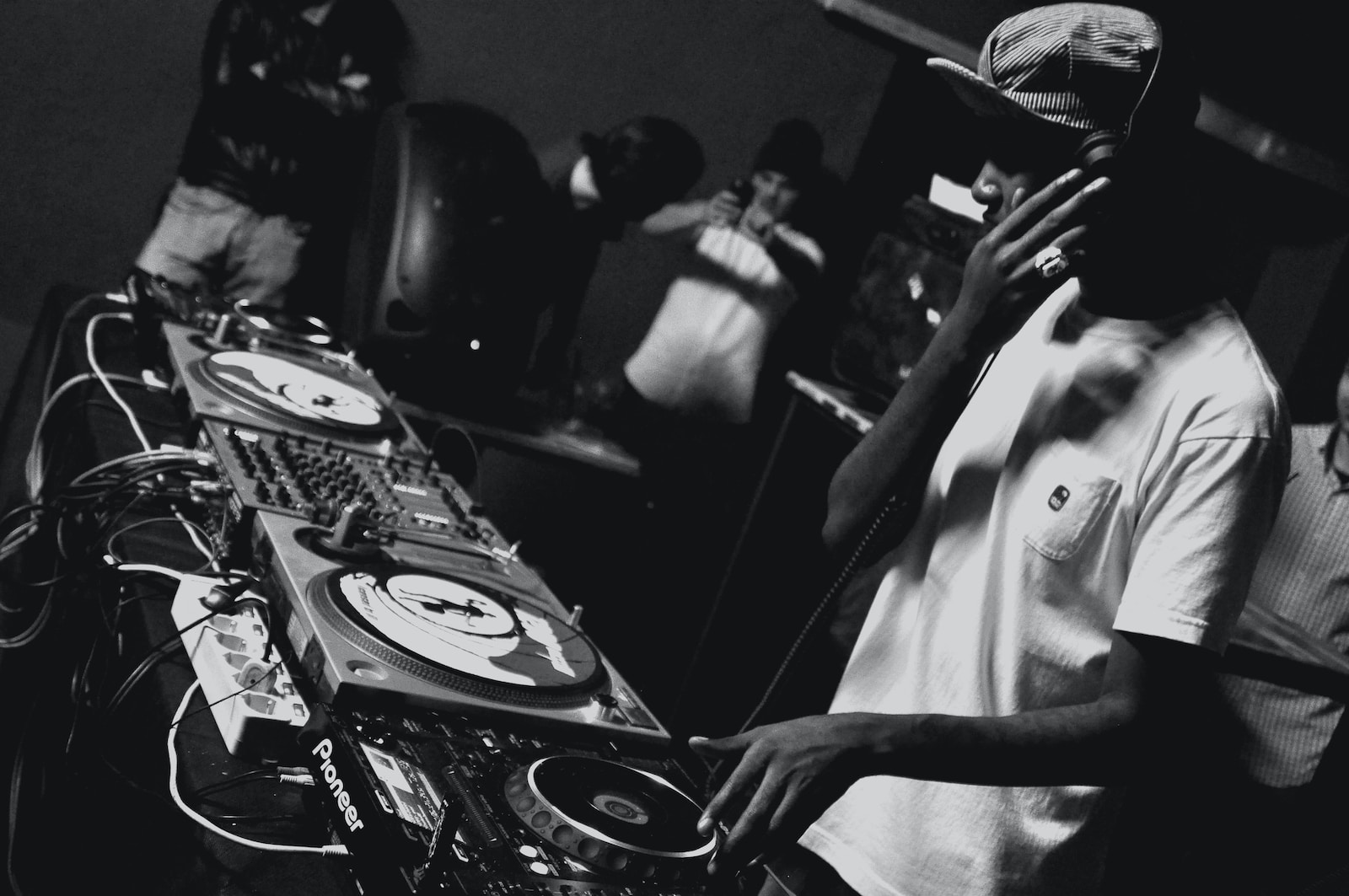
Schools of Thought in the Art and Practice of DJing
The art of DJing has evolved with a variety of unique approaches, reflecting each DJ’s preferences, technology and creativity. Here are some of the most prominent schools of thought:
1. Turntablism
Turntablism emphasizes the use of turntables and vinyl as a DJ’s primary tools. This approach focuses on manipulating sound and rhythm through techniques like:
- Scratching: Creating sound effects by moving the vinyl back and forth.
- Beat Juggling: Crafting new rhythmic patterns by blending multiple tracks.
Rooted in the hip-hop culture of the 1970s and 1980s, turntablism also applies to genres such as funk, soul, and electronic dance music (EDM).
2. Controllerism
Controllerism leverages digital devices like DJ controllers and software to create and manipulate music in real time. This approach enables:
- MIDI Programming: Designing complex controls for unique performances.
- Digital Manipulation: Offering high flexibility in track handling.
While often associated with EDM, controllerism also complements genres like hip-hop and pop, providing DJs with creative freedom.
3. Hybrid DJing
Hybrid DJing combines elements of turntablism and controllerism. DJs in this style often use:
- A mix of vinyl records and digital controllers.
- Software and samplers for live remixing.
This approach bridges traditional techniques with modern technology, delivering a distinctive experience.
4. Live Remixing
Live Remixing involves taking elements from one or more tracks and manipulating them in real time to create a new composition. Key features include:
- Tools Used: Digital controllers, samplers, and software plugins.
- Creativity: Producing unique performances that cannot be replicated.
Popular in EDM and other tech-driven genres, live remixing showcases technical expertise and creativity while offering audiences an exclusive experience.
5. Harmonic Mixing
Harmonic mixing involves blending tracks based on their musical keys to ensure smooth and harmonious transitions. DJs in this school of thought use:
- Key and Tempo Analysis: To match musically compatible tracks.
- Melodic Focus: Ideal for genres like pop, rock, and EDM.
This technique delivers a seamless musical journey, keeping the audience emotionally engaged.
6. Genre Specialization
Some DJs choose to specialize in a specific genre, such as techno or hip-hop. This approach offers:
- In-Depth Understanding: Of the genre’s history and culture.
- Focused Sets: Reflecting the unique characteristics of the genre.
Specialization helps DJs build a strong identity and connect with audiences who share a passion for the genre.
Conclusion
There is no “right” way to approach DJing. Each school of thought has its own strengths and challenges, depending on a DJ’s goals, preferences, and creative vision. From the traditional artistry of turntablism to the innovation of live remixing, DJing is about channeling energy and creating unforgettable experiences for the audience.










































































































